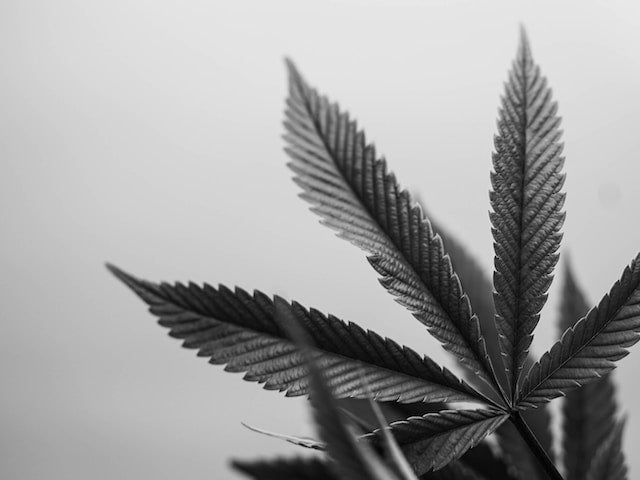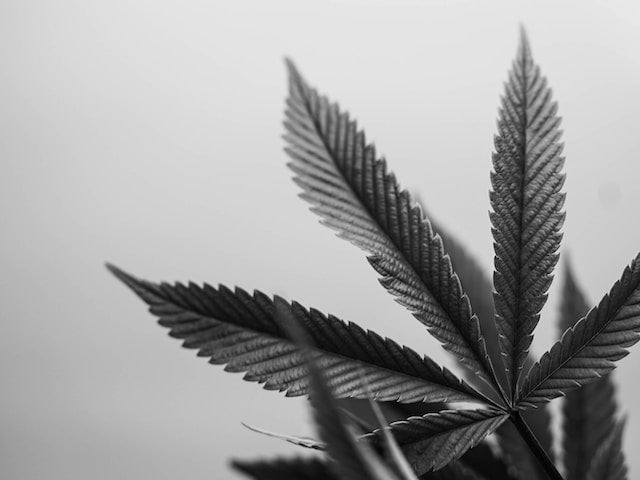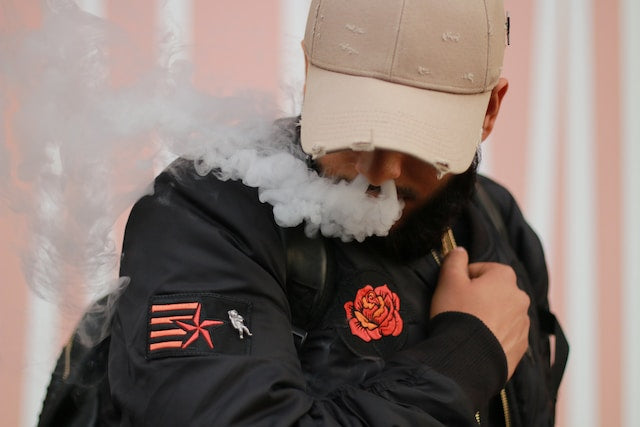Your cart is currently empty.

Ever found yourself pondering on the mystery of how to make your homegrown weed potent? You're not alone. It's a common goal among cannabis enthusiasts, from seasoned cultivators to beginners.
Imagine standing in your grow room, surrounded by lush green plants bathing under bright grow lights. Picture this: each plant producing trichomes at their maximum potential, rich with that coveted THC.
The journey from seedling to harvesting the most potent cannabis is akin to an intricate dance; it requires finesse and paying attention to minute details such as light conditions and harvest time indicators like milky white pistils.
A question pops up - Can I increase my yield while also boosting THC levels? Well...that's exactly what we'll be unraveling today!
Understanding THC Levels in Cannabis Cultivation
If you're into growing cannabis, chances are high that you've asked yourself: "How can I increase the potency of my weed?" You're not alone. This common goal is shared by many cultivators who seek to maximize their crop's potential for recreational cannabis use or medical purposes.
Let's talk about THC levels and how they play a vital role in determining the quality of your yield. In case you didn't know, THC (Delta 9-Tetrahydrocannabinol) is the main reason why we get 'high' from smoking pot; it’s one of over 100 cannabinoids found in marijuana but arguably the most well-known due to its psychoactive properties.
The Impact of Moisture on THC Levels
Did you know freshly harvested marijuana has more moisture than dried buds? According to data, fresh weed contains significantly higher moisture content compared with cured ones which impacts both THC yield and cannabinoid content. The process doesn’t stop after harvesting because as these moist buds dry out slowly during the curing stage, it helps convert non-psychoactive compounds into active forms, thereby increasing overall potency. So remember - slow cure equals potent bud.
Paying attention to factors like temperature and humidity when drying your harvest plays a big part too. High temperatures could degrade precious cannabinoids while incorrect humidity levels might lead to moldy stash – something no grower ever wants.
The Influence of Light Conditions on Cannabis Plants
Your choice in grow lights can also make an impact on plant health leading up towards higher THC production. Studies show that bright grow lights can enhance THC content. The right light conditions are essential in growing cannabis, as it directly influences the photosynthesis process and hence the plant's overall health and cannabinoid production.
believe in the power of traditional HID lights. But regardless, it's all about finding what works best for your specific growing needs.
Boosting the THC potency in your weed crop comes down to two key factors: moisture control and light conditions. Remember, fresh marijuana contains more water than dried buds - so a slow cure process is crucial for higher potency. Additionally, paying attention to temperature and humidity during drying can prevent cannabinoid degradation or moldy stash. As for lighting, bright grow lights are essential because they stimulate the plant's growth and increase its overall strength.
Grow Lights and Their Role in Cannabis Plant Health
If you're growing cannabis, you've likely heard of the importance of grow lights. They are not just another tool in your gardening shed; they can make or break your yield.
The Influence of Light Conditions on Cannabis Plants
Cannabis plants thrive under specific light conditions. These conditions directly influence their health and the levels of THC they produce. Let's delve deeper into this concept.
Firstly, a bright grow light is crucial to achieving high-quality buds with increased resin production. It works by mimicking sunlight which allows photosynthesis to occur indoors—fueling growth and development throughout the plant's life cycle from seedling stage to flowering.
In particular, during the vegetative stage, these indoor sun substitutes help develop healthy foliage while encouraging robust stem structure capable of supporting heavy bud sets later on. Grow Weed Easy has an excellent guide that provides more details about it.
Different types of grow lights such as LED (Light Emitting Diodes), HPS (High-Pressure Sodium), MH (Metal Halide) have different spectrums suitable for various stages of cannabis cultivation. Maximum Yield tells us more about each type if you're interested in digging deeper into this topic.
A well-lit environment stimulates plant cells responsible for producing trichomes—the tiny crystal-like structures where most cannabinoids like THC are synthesized (PotGuide). In other words, the right light conditions help maximize THC production.
Too much of something can be detrimental. Grow lights that are excessively bright or prolonged exposure could potentially stress your plants and diminish their potency. To learn more about this topic, check out our resource.
Harvest Time Considerations for Optimal THC Yield
When is the ideal moment to collect your crop?
Determining Harvest Based on Plant Indicators
As growers, we can get insights from our plant itself. Paying attention to details like milky white pistils and trichomes can help determine optimal harvest time.
The main reason behind this is because as your cannabis plant produces trichomes (those tiny crystal-like hairs), they go through a lifecycle that reflects their potency. Initially clear, these resin-filled glands turn cloudy or 'milky white' at peak maturity—this signals high levels of THC production.
Another interesting point to note: stress plants early in their life cycle might increase yield but could also reduce potency - so balance is key. You want your weed potent, yet abundant.
Paying Attention To The Moisture Content At Harvest Time
You'll need to be mindful about moisture too during harvest time for maximum potential results. It's important not just for maintaining freshness but also influencing cannabinoid content including THC yield.
A fact worth remembering: Curing weed can begin when there is only 33% water left and the weight has reduced by 50%. This information isn't pulled out of thin air; instead it comes from seasoned cultivators who have harvested tons upon tons of bud over decades-long careers (source). By adhering strictly to this rule, you're likely to end up with cannabis that is potent and free from any unwanted microbial activity.
The Strain Matters Too
While general harvesting principles apply to all strains, some have unique needs. Take 'Girl Scout Cookies', for instance. This strain greatly benefits from a longer flowering stage. It gives the plant more time to develop and enhances its overall quality.
Timing, Details & Balance: To maximize THC yield in your cannabis crop, timing your harvest is key. Pay attention to plant indicators like milky white pistils and trichomes for optimal harvest time. Also remember: stressing plants early might boost yield but could cut potency—so strike a balance. Keep an eye on the moisture content at harvest as well. Ensuring proper curing can make all the difference in quality.
The Significance of Vapor Pressure Deficit in Cannabis Cultivation
Understanding vapor pressure deficit (VPD) can make a world of difference when it comes to cannabis cultivation. The secret to successful cannabis cultivation is the harmonious combination of temperature and humidity.
Vapor Pressure Deficit and Plant Health
In essence, VPD is the difference between how much moisture is in the air versus how much moisture the air could hold when saturated. This plays an integral role not just for overall plant health, but also for increasing THC production.
If you've ever wondered why your plants aren't producing as many trichomes or why your buds aren't as potent as they should be, there's a good chance you need to pay more attention to VPD. After all, too high or too low VPD can stress plants out which ultimately reduce potency.
A balanced environment lets your weed reach its maximum potential by ensuring optimal transpiration rates – this keeps everything running smoothly from nutrient uptake through roots up until cannabinoid synthesis within flowers themselves.
| Growth Stage | VPD kPa |
| Optimal Vapor Pressure Deficit Levels at Different Stages of Growth: | |
|---|---|
| Seedlings and Clones | 0.4 - 0.7 |
| Vegging Stage(Grow Lights On) | This is the Growth Stage when the Lights are Off |
The Role of UV Light in Increasing THC Levels
For anyone growing cannabis, a common goal is to increase the potency of your crop. And when it comes to enhancing the psychoactive power of weed, THC (Tetrahydrocannabinol) is key. One lesser-known factor that can boost this magic molecule's production? Ultraviolet light.
You might have heard about how certain plants use sunlight for photosynthesis - turning carbon dioxide and water into oxygen and glucose. However, there is more to it than just the basics; UV rays, particularly those of type UV-B may actually cause cannabis plants to produce higher levels of THC as a protective measure against damage from these powerful photons. Specifically with cannabis plants, exposure to ultraviolet or UV rays, especially UV-B type rays, may stimulate them to produce higher levels of THC as a protective mechanism against damage from these high-energy photons.
This effect has been seen both anecdotally by growers and scientifically through research studies such as one conducted at the University of Mississippi where marijuana exposed to supplemental UV-B radiation produced significantly more THC compared with control samples. (Source)
Increase THC Levels Using Right Amounts Of UV Light
Increasing THC levels using specific amounts of "stress" induced by controlled doses of strong lights like UV rays sounds paradoxical but it’s part science, part art form. While excessive stress can harm your plant or reduce its potency over time; just enough environmental pressure could help push it towards producing more cannabinoids including our beloved psychoactive compound: tetrahydrocannabinol.
The trick here is balancing between "too much" and "just right". Overdoing the amount or intensity could lead not only reducing yield due improper growth conditions but also risks burning the plant matter itself.
Therefore, proper usage of UV light to stimulate THC production in your cannabis plants requires careful attention and a degree of expertise. However, with some knowledge about how UV radiation affects cannabis physiology and careful monitoring, you can turn this potential hazard into an advantage for cultivating potent weed.
Boosting THC potency in weed isn't just science, it's an art. By carefully using UV light - specifically UV-B rays - you can nudge your cannabis plants to produce more of the magic molecule: Tetrahydrocannabinol (THC). But be careful. Balance is key here; too much light might damage your crop or reduce its potency.
Conclusion
So, you've journeyed through the art of increasing THC potency in weed. The dance has been intricate, but now it's time to take a bow.
We started with understanding moisture and its impact on your cannabis plant’s THC levels. We learned how grow lights play an integral role in maintaining plant health and boosting THC production.
Harvesting at just the right moment can maximize your yield of potent cannabis. Remember those milky white pistils as clear indicators!
Vapor pressure deficit popped up too – remember that for healthy plants and high yields? And let's not forget about UV light's crucial role in ramping up those THC levels.
Keep these tips close by next time you're growing cannabis! You'll be harvesting higher-THC buds before you know it!



